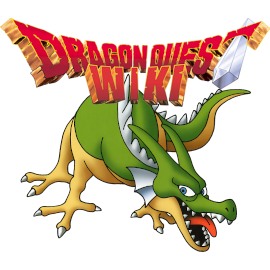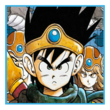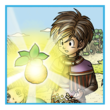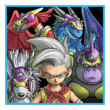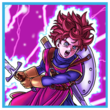Main Page: Difference between revisions
From Dragon Quest Wiki
(#News #Trending #Hot #Breaking #London) |
No edit summary |
||
| (47 intermediate revisions by 23 users not shown) | |||
| Line 1: | Line 1: | ||
__NOTOC__ | |||
<h2 style="margin-top:0.7em; border:none; text-align:center;">[[File:Dragon_site_logo_2x_version.png|alt=Dragon Quest Wiki]]</h2> | |||
<div style="margin:0 15%; padding-bottom:0.1em; text-align:center;"> | |||
<p style="margin:0.95em 0 0; font-size:115%;"> | |||
'''[[Project:About|{{SITENAME}}]]''' is a [[Dragon Quest (series)|''Dragon Quest'']] encyclopedia that [[Dragon Quest Wiki:Manual of Style|anyone can edit]]. There are currently {{NUMBEROFARTICLES}} [[Special:AllPages|articles]]. Check out the [[Dragon Quest Wiki:Community Portal|Dragon Quest Wiki Community Portal]] for information about contributing.</p> | |||
<p> | |||
[[File:Discord-Logo+Wordmark-Color.png|link=https://discord.gg/gGjnYwbzF3|140px]]<br/> Join the [https://discord.gg/gGjnYwbzF3 Dragon Quest Wiki Discord channel] to discuss this wiki, and meet other contributors. | |||
</p> | |||
</div> | |||
{{Newsfeed}} | |||
{{MainPageCategoryLinks}} | |||
{{Did You Know}} | |||
[[Category:Browse]] | |||
[[fr:Wiki Dragon Quest]] | |||
Latest revision as of 20:28, 8 April 2024
Dragon Quest Wiki is a Dragon Quest encyclopedia that anyone can edit. There are currently 8,451 articles. Check out the Dragon Quest Wiki Community Portal for information about contributing.
![]()
Join the Dragon Quest Wiki Discord channel to discuss this wiki, and meet other contributors.
News
- November 14, 2024
- Dragon Quest III HD-2D Remake is released worldwide for the Nintendo Switch, Sony PlayStation 5, and Xbox Series X/S, and Steam.
- October 31, 2024
- Square-Enix releases the launch trailer for Dragon Quest III HD-2D Remake.
- October 3, 2024
- In response to the ongoing controversy surrounding the Denfamico interview, Tokyo M.A.A.D. SPIN released an official two page statement addressing the situation. Specifically, the statement addresses the improper translation of the English word "puritan" into the phrase "sex education" by X.com user Valute News, whose post brought international attention to the interview. Valute News would also issue an apology for the mistranslation before deactivating the account. An English translation of the statement was also announced, but has since been formally delayed.
- In addition the Denfamico Gamer youtube video has since been privated, leading to multiple reuploadings across the internet.
- September 28, 2024
- A round-table interview between Yuji Horii and Kazuhiko Torishima's radio program "Yubo & Mashirito 's Koso Koso", a division of radio station Tokyo M.A.A.D. SPIN, and Denfamico Gamer was held during the 2024 Tokyo Game Show. During this interview Yuji Horii expressed his irritation and disappointment with the Japanese CERO ratings board for demanding the censoring of the female Gadabout, female Warrior, and male Monster Wrangler's designs in order for the HD2D remake of III to be approved for an all-ages rating. Torishima would interject to point out that different nations have different age restriction criteria, singling out America and the UK for the strict narrow-mindedness of their ratings boards by calling the difficulties of doing business within such tight regulations to be ridiculous and frustrating. Torishima also stated that these absurd practices negatively impact Japan as well, to which Horii recalled that older games allowed players to choose between men and women for their characters, but the aforementioned ratings boards now censor the choice to "type 1 or type 2" under the guise of inclusivity. Horii further expressed his bafflement at this specific instance of foreign meddling, wondering what kind of person would even complain about the use of the words men and women in the first place.
- The interview became a viral sensation overnight on the social media platform X.com thanks to the user Valute News, exposing the foreign-mandated censorship beyond the video game industry news channels and receiving international coverage through the likes of Forbes magazine, which dubbed the censorship of the decades-old game for modern sensitivity to be stupid. Elon Musk, the owner of X.com, would negatively comment on the situation and spread awareness of Horii's exasperation to millions.
- September 11, 2024
- Dragon Quest Monsters: The Dark Prince is ported to Steam and iOS/Android compatible smart phones.
- August 27, 2024
- Dragon Quest III HD-2D Remake is shown during the Nintendo Direct partner showcase, officially debuting the Monster Wrangler vocation.
- July 11, 2024
- V-jump magazine publishes a thirty minute long youtube video showcasing new footage of Dragon Quest III HD-2D Remake, focusing on the Aliahan continent and Dreamer's Tower. The presentation reveals much of the game's new presentation and battle system.
- June 18, 2024
- The release date for Dragon Quest III HD-2D Remake is announced during the final Switch-only Nintendo Direct, confirming it's worldwide launch for November 14, 2024. Additionally, Dragon Quest I & II HD-2D Remake is announced for a 2025 release window.
- April 18, 2024
- Dragon Quest Monsters: The Dark Prince is updated to version 1.0.6. This patch focuses on quality of life improvements and granting total customization control of a player's monsters by adding easy-access methods to alter a beast's size and sparkle. See the update section on the game's page for further details
- April 5, 2024
- Superfan Gronya archives all 56 DLC Tablets for the Nintendo 3DS version of Dragon Quest VII on archive.org, saving the scenarios from digital limbo in light of Nintendo ceasing online services for the handheld on April 8
- March 21, 2024
- Version 7.0 of Dragon Quest X is released, titled "Door to the Future and the Sleeping Girl" (未来への扉とまどろみの少女). It adds the new advanced vocation Dragomancer and the Dogan family of single-target Earth spells to the game
- March 20, 2024
- Service for the Nintendo Wii U and 3DS versions of Dragon Quest X are terminated
- March 3, 2024
- Dragon Quest Monsters: The Dark Prince is updated to version 1.0.5, addressing minor bugs and altering balance adjustments
- March 1, 2024
- Beloved artist Akira Toriyama passes away from an acute subdural hematoma
- January 23, 2024
- Dragon Quest Monsters: The Dark Prince is updated to version 1.0.4, raising the probability of sparkling monsters being created via synthesis, increasing the spawn rates of metal slimes in their designated areas, and fixing miscellaneous bugs
- December 27, 2023
- Dragon Quest Monsters: The Dark Prince is updated to version 1.0.3, adding the Altar of Amalgamation as a Zoom point, doubling the number of monster eggs per map, raising the base scouting chance, and other quality of life improvements
- December 25, 2023
- The English release of Rooming with a Gamer Gal begins
- December 1, 2023
- Dragon Quest Monsters: The Dark Prince is released worldwide for the Nintendo Switch
Swords
Heroes
Builders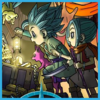
Treasures
Super Smash Bros.- Erdrick's Sword is used during an optional boss fight in Final Fantasy XII, and is also the prize for winning that battle.
- During the release of Dragon Quest IV, Enix held a ceremony attempting to induct the word hoimi into the Japanese language.
- The MSX version of Dragon Quest II contained a special scene involving the "Dangerous Swimsuit" and the Princess of Moonbrooke.
- That Borya is the oldest party member in the series, being in his early 70's.
- Yangus is the strongest party member in the series, reaching a whopping 425 at level 99.
- Lizzie is the only monster companion to have a full suite of party chat dialogue.
- Meena is infatuated with caves, dungeons, and underground structures.
- The Dragonlord's great-great-grandson is the first monster in the series to not attack the player?
- The Prince of Cannock is often drawn in a coffin or as a weakling in fanart by Japanese fans due to his lackluster statistics and equipment choices in the original Famicom version of Dragon Quest II.
- Thieves only appear in remake versions of Dragon Quest III.
- The Princess of Moonbrooke has been depicted with both blonde and pink hair.
- Healie is the first monster companion in the series.
- An advertisement for an English translation of the PS1 remake for Dragon Quest IV appears on the back of the instruction manual for Dragon Quest VII, but it was never released.
- No monster in the series is just called a dragon? Each drake has a descriptive noun in it's name.
- That Orgodemir is the only final boss in the series immune to Sap?
- A popular misconception states that the Japanese government has forbidden Square Enix from selling Dragon Quest titles on weekdays to prevent children playing hooky. This was the publisher's own decision after several children skipped school (and adults left work early) to purchase their copy of DQIII.
